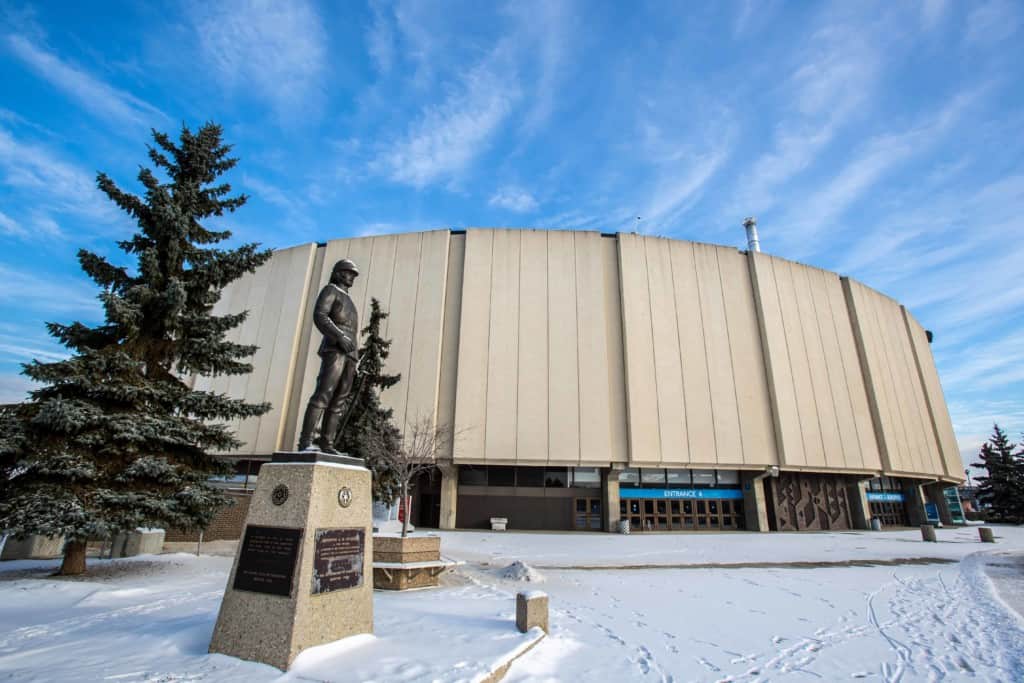Council discusses the Coliseum site’s fate
The debate over the Coliseum site’s future is ongoing, but the city’s executive committee supported Mayor Don Iveson’s motion to confirm the closure of the Coliseum. City council will vote on the motion on Feb. 27.
On Feb. 22, city administration presented a report about re-developing the site. Estimates for demolition costs are $15-20 million, and the yearly cost of maintaining the empty building is $1.5 million. Having the site sit empty is not ideal, but there are problems with immediately taking it to the market.
Questions remain about the future of the building, its 17-acre site, and the adjacent land, which includes the Edmonton Expo Centre, Northlands Park, Borden Park, and two major transit stations.
Community members were on hand to speak at the meeting, including Jim Gendron and Brian Finley from Parkdale-Cromdale and Bellevue. They support a group called the District G Community Collaboration, which includes community leagues adjacent to the planning area.

“At the first meeting, we agreed on the need for a strengthened and active role with nearby communities in defining the future of the exhibition lands,” said Gendron.
Rob Bernshaw, who also spoke at the meeting, presented a vision of the Coliseum building re-purposed as affordable housing.
City officials recommend that council complete its work on a development concept for the 160-acre site and consider offering the land to the market when a coordinated vision for the area has been finalized. This would likely be in 2019.
Council’s options are limited when it comes to finding other purposes for the Coliseum building, since an agreement between the city and the Oilers Entertainment Group (OEG) stipulates that the building cannot be used for sports or entertainment.
Last September, council supported the intention to close the Coliseum, but the formal motion hasn’t yet passed. Council committed in principle to closing the Coliseum, and the OEG agreed to release the city from a sponsorship commitment that required the city to pay $2 million a year for 10 years.
The project is still exploring ideas. By the middle of 2018, the city’s goal is to gather ideas, study them for feasibility, and produce a short list.
Gendron is optimistic about continued engagement with the project, but said some opportunities haven’t been realized, and the city needs to build trust with neighbourhoods surrounding the planning area.
“This is a once-in-a-lifetime opportunity for city building. The planning area covers in excess of 140 acres that are strategically located near the heart of the city with numerous existing amenities,” Gendron said.
Gendron explained the Stadium Station Area Redevelopment Plan (ARP) will bring high-density housing opportunities and possible services and access.
“Success will ultimately turn on how well the proposed developments fit into the existing community. This can only be accomplished by having the community engaged in a meaningful, authentic, well-planned and constructive way to help frame decisions that account for the local residents throughout the life cycle of the project,” Gendron said.
For more information, visit edmonton.ca/exhibitionlands.
Featured Image: It’s estimated that demolishing the Coliseum would cost $15-20 million. | Rebecca Lippiatt







